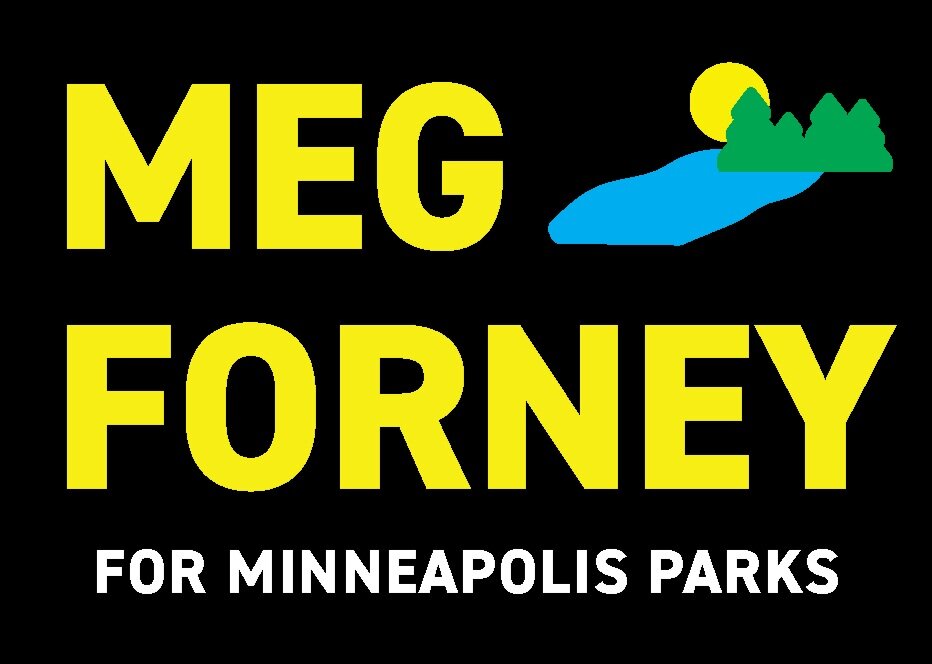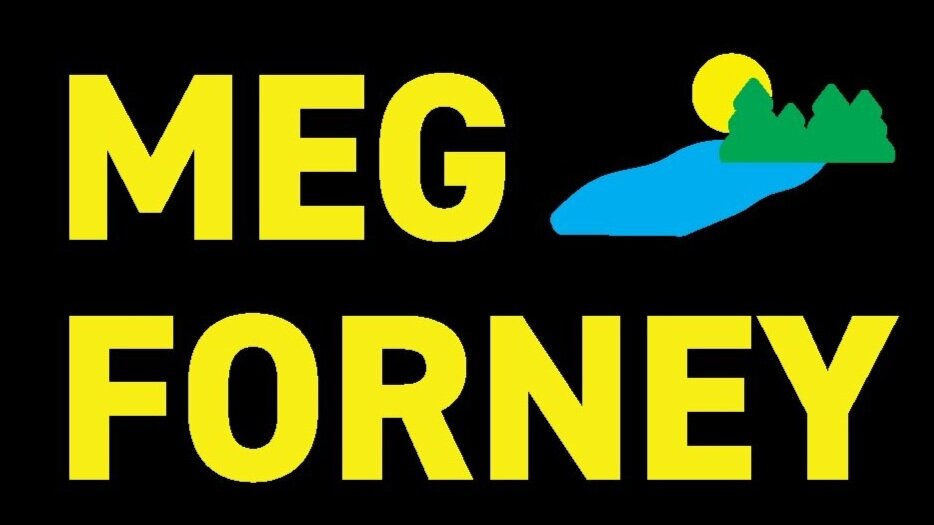Climate Change
Do you think the MPRB is doing enough to address climate change?
YES_____ NO__X___ Please elaborate on your answer.
I am a lead commissioner in creating our Climate Resiliency Initiative. With our Tree Reforestation Levy expiring at the end of 2021, I have been pro-actively working to establish a broader framework with consistent funding. The first part is to begin the creation of the first ever in the State of Minnesota certified carbon-offset-credit program to grow Minneapolis green space, to support climate and environmental resiliency. This pilot Urban Tree Carbon Offset Program will sell carbon-offset-credits with proceeds invested back into urban tree planting and care since the Minneapolis Park and and Recreation Board (MPRB) has a long history of planting and maintaining trees along boulevards and in parks. This voluntary carbon-offset-credits program lets businesses offset their carbon footprint by paying other entities to sequester carbon or reduce greenhouse gas emissions. Marketing to Minnesota companies will generate revenue that can be invested back into additional tree planting and other climate resiliency initiatives. Further, expanding the urban tree canopy creates benefits beyond carbon sequestration—including stormwater management, heat island and air pollution mitigation, green workforce development, environmental equity, and local community impact.
Environmental Justice
Climate change, pollution, and other environmental problems disproportionately affect certain groups of people, such as Indigenous communities and communities of color. Please identify any ways Minneapolitans are affected unfairly by environmental problems and access to outdoor recreation opportunities. What have you done, or what would you do, to address these inequities?
Focusing on heat islands in North Minneapolis, where the largest are located and other environmentally disadvantaged areas, the Climate Resiliency Initiative I am spearheading’s scope is 7,000 trees planted over a one-year period including street trees and park trees. Designing tree canopies mitigates our heat islands through first identifying potential “hot spots,” then employing land use and zoning controls, as well as consideration of tree canopy, site design, and vulnerable populations. Rising temperatures are intensified in developed areas due to a lack of vegetation and more roads, rooftops, and parking lots. Extreme heat can increase health risks in vulnerable populations that often live in densely populated urban areas. The Tree Levy that is expiring removed over 40,000 Ash trees and replaced them over eight years. Yet, the canopy hasn’t expanded in numbers. To do so, our existing trees must be preserved and also new trees need to be planted at a greater rate. MPRB will plant and maintain the trees with MPRB employees and commit to maintaining and tracking the initial tree pilot for 25 years. Trees are most vulnerable in the first five years. Our Minneapolis tree canopy is threatened by development, invasive species, climate change, and decreased funding for tree planting. And tree canopy can’t be established quickly - it takes 10-20 years for an urban tree to become a meaningful contributor to the tree canopy. With our emergency Minneapolis tree levy expiring at the end of 2021, the new funding from carbon-offset-credits can initiate tree planting in 2022 with minimal project start-up.
Preventing Displacement
Green gentrification occurs when “green development” increases property values and results in gentrification, or implements policies which exclude low income and BIPOC communities. The focus on the environment maintains the false narrative that “everyone benefits” from increased green space. But without protections against displacement, some will benefit and others will be harmed. This creates a condition where the minimal positive ecological impact can only be gained by the expense of a greater negative social and economic impact. How can the MPRB ensure that current park users and people living in homes near parks benefit from park improvements and aren’t displaced or made to feel unwelcome by so-called “improvements”? What specific policies would you champion to prevent displacement and ensure meaningful community involvement in decisions regarding park improvements?
I have been greatly concerned about the displacement of our community. The vast shift in owner-occupied housing in north Minneapolis to out-state-corporate investors has disproportionately impacted our BIPOC community. Numerous aspects have gone unchecked by governmental entities—regressive real estate taxes, housing inspections for code violations, right of first refusal for renters to own where they live and more disparities. Working across jurisdictions to mitigate displacement is critical. The role of MPRB is to make all parks accessible — physically as well as culturally. The current update of our Comprehensive Plan, Parks for All, is most focused on this mission: The Minneapolis Park and Recreation Board exists to provide and dismantle historic inequities of places and recreation opportunities for all people to gather, celebrate, contemplate, and engage in activities that promote health, well-being, community, and the environment. … equitable park access balanced with ecological health … that break down barriers.
Tree Canopy
What are the biggest threats to the tree canopy in Minneapolis parks? What have you done or would you do to support more resources for protecting our urban forests?
The expiration of our Tree Reforestation Levy means the potential loss of MPRB forestry staff. That is why it is critical to get this certification to fund staffing and continue our tree planting. The MOU to develop the certification will come before the July 21st Board meeting. The Climate Resiliency Initiative Task Force is looking for other sources of consistent funding to assure robust tree planting as well as maintenance. Our tree canopy is most depleted in North Minneapolis as well as our Downtown areas. The Task Force includes partnering with the City to address landlord incentives to plant and maintain trees. Our Minneapolis tree canopy is threatened by development, invasive species, climate change, and decreased funding for tree planting. And our tree canopy can’t be established quickly—it takes 10-20 years for an urban tree to become a meaningful contributor to the tree canopy. Parks are the best tool for enhancing air and water quality and mitigating heat islands. Increasing vegetation is our best line of defense.
Transportation
Statewide, transportation is the #1 source of climate pollution. While electrification of vehicles is one important part of the solution, we cannot possibly address climate through electrification alone. We must reduce Vehicle Miles Travelled (VMT) by providing safe, accessible and affordable transportation options like walking, bicycling, and public transit. Do you support funding and more aggressively transitioning MPRB’s vehicle fleet to full electric?
YES__X___ NO_____
Do you support #Parkways4People and opening up MPRB’s parkways for walking, bicycling, and rolling while closing them to car and truck traffic?
YES__X___ NO_____
What do you see as the most important gap or gaps in the parkway network, and what would you propose to fill those gaps?
Access to the upper Mississippi riverfront is marginal. Continuation of the trails adjacent to the river is essential for residents of north and northeast Minneapolis. I have been a lead commissioner in securing lands and establishing connections to and from the river. The establishment of the 26th Avenue Overlook was pivotal in connecting the Great Northern Greenway to the riverfront, funded largely by the Minneapolis Parks Foundation that I sit as the MPRB appointee. I was the chair of the Citizen Advisory Committee for the trail in front of MPRB headquarters just above Plymouth Avenue. The connection from Ole Olson Park to the Overlook is a critical piece as well as the rail bridge there. The patchwork of continuous trails above the falls is doable. In my short two terms as Commissioner, we have increased from 94% to 98% that every resident is within a 10-minute walk of a park. Now that the entire city has been park master-planned, policies and practices can be enacted for long-term development and improvements. We added more strategic parkland to our system and targeted access gaps in underserved areas.
Land Use
Do you support the Hiawatha Golf Course Master Plan ?
YES__X___ NO_____ Please elaborate on your answer and share any other thoughts you have about golf courses in the MPRB system.
I have been endorsed by the Friends of Hiawatha. In their endorsement they stated, “Commissioner Meg has a great track record on issues related to Lake Hiawatha. We believe Meg will continue to be an ally for Lake Hiawatha and our community. Meg is supportive of the Hiawatha Golf Course Area Masterplan.” I am excited about the mitigation that is occurring at Columbia Golf Course in partnership with the Mississippi Watershed Management Organization and the City of Minneapolis. I am hopeful that stormwater best management practices (BMPs) to improve stormwater quality, mitigate flooding, improve ecological systems and enhance recreational opportunities will occur with the Minnehaha Watershed Organization as they move downstream with their efforts. It is critical that the City of Minneapolis also is engaged around Hiawatha and the Minnehaha watershed and incorporate BMPs in their stormwater system through increasing flood resiliency, reducing pollutant loading to the Mississippi River, and improving ecological function.
Water
Minneapolis gets its drinking water from a renewable resource—the Mississippi—but processing that water is difficult because of agricultural runoff. Stormwater events are becoming more severe because of climate change. Our lakes are seriously threatened by salt pollution, including salt use on private properties and by private contractors. What have you done, or would you do, to reduce water pollution in Minneapolis parks? What can we do to improve our resilience to climate change and stormwater events?
MPRB is supporting a robust 2021 Federal Legislative Agenda to tap the American Rescue Plan funding to invest in water infrastructure, which includes Green Parkway Infrastructure to narrow, move and reroute certain parkway segments to eliminate impervious surfaces, modify stormwater pipes to allow for pre-treatment of water entering lakes and creeks and enhance shorelines and stabilize water levels for water quality and habitat. To transform regional parking lots for water quality through permeable paving, extensive filtration or infiltration basins, non-asphaltic pavement and inclusion of significant tree canopy within parking lots. To improve shoreline and in-stream enhancements including re-meanders, riffles (for oxygenation), floodplain expansion, pre-treatment of stormwater, and improvement of shoreline vegetation. And to include modifications to existing stormwater piping, outfalls and flumes in partnership with the City of Minneapolis. The fact that the entire Park System has been Master Planned during my tenure on the Board made it possible to build out this agenda with statistical support.
Public Safety
George Floyd was killed in Minneapolis, setting off a global discussion of policing—including new visions of public safety. Sierra Club is committed to working in collaboration with environmental justice and justice organizations to ensure that our public safety works for us all. What have you done, or would you do, to address police violence and rethink public safety in Minneapolis parks? What do you believe is the role of park police and Minneapolis police in our parks? NOTE: You need not limit your answer to 150 words for this question.
Our parkland is 15% of the City, yet, has 2% of the crime. Safety is the most critical aspect of our park system—for children and families to not just be safe, but feel safe is paramount. The role of Park Police is relation-based. Building connections with people in the parks is their prime objective. I have a strong connection also to our Park Police because I also believe in building and nurturing strong relationships. The leadership of our Chief of Police established Diversity Training, not just within the force but also throughout the entire MPRB system. He led the establishment of the police accountability and oversight committee. Since the murder of George Floyd, we at MPRB have advocated for the residency of our officers. Although, the State mandated the “Stanek Law”—a 1999 ban on residency requirements for police officers, applicants for Park Policing are given extra credit for Minneapolis residency. I am supportive of the passage of the George Floyd Justice in Policing Act to codify real police change. Addressing qualified immunity, use of force and misconduct, and daylighting patterns of practices are essential.

